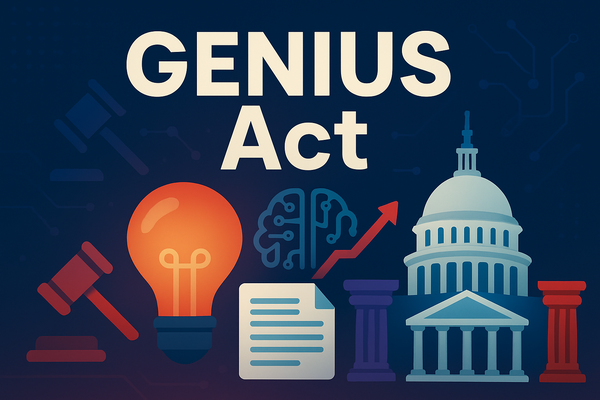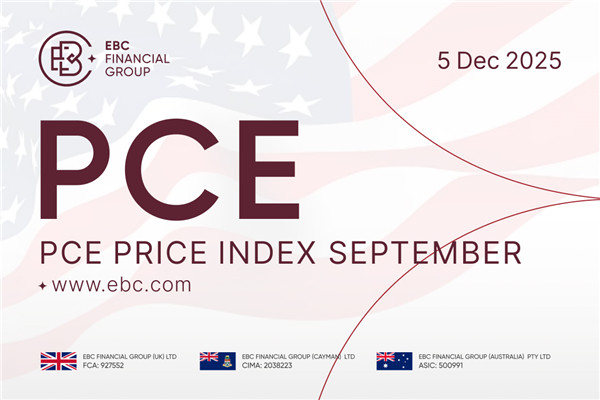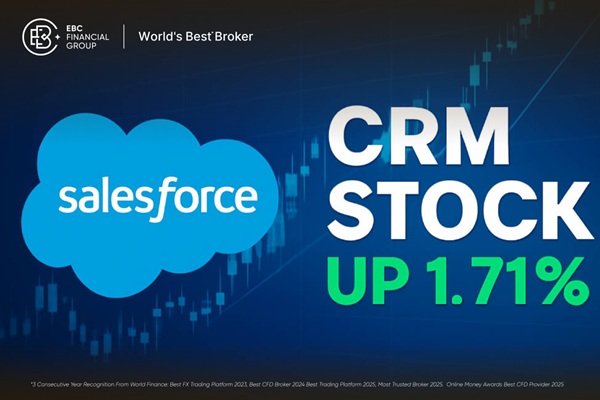Understanding the GENIUS Act is essential for market watchers, especially traders seeking clarity on the future of stablecoins and the digital asset economy in the United States.
This article breaks down the key points of the act, explains its relevance to traders, and provides practical insights into navigating the evolving landscape under this new regulatory regime.
What Is the GENIUS Act?
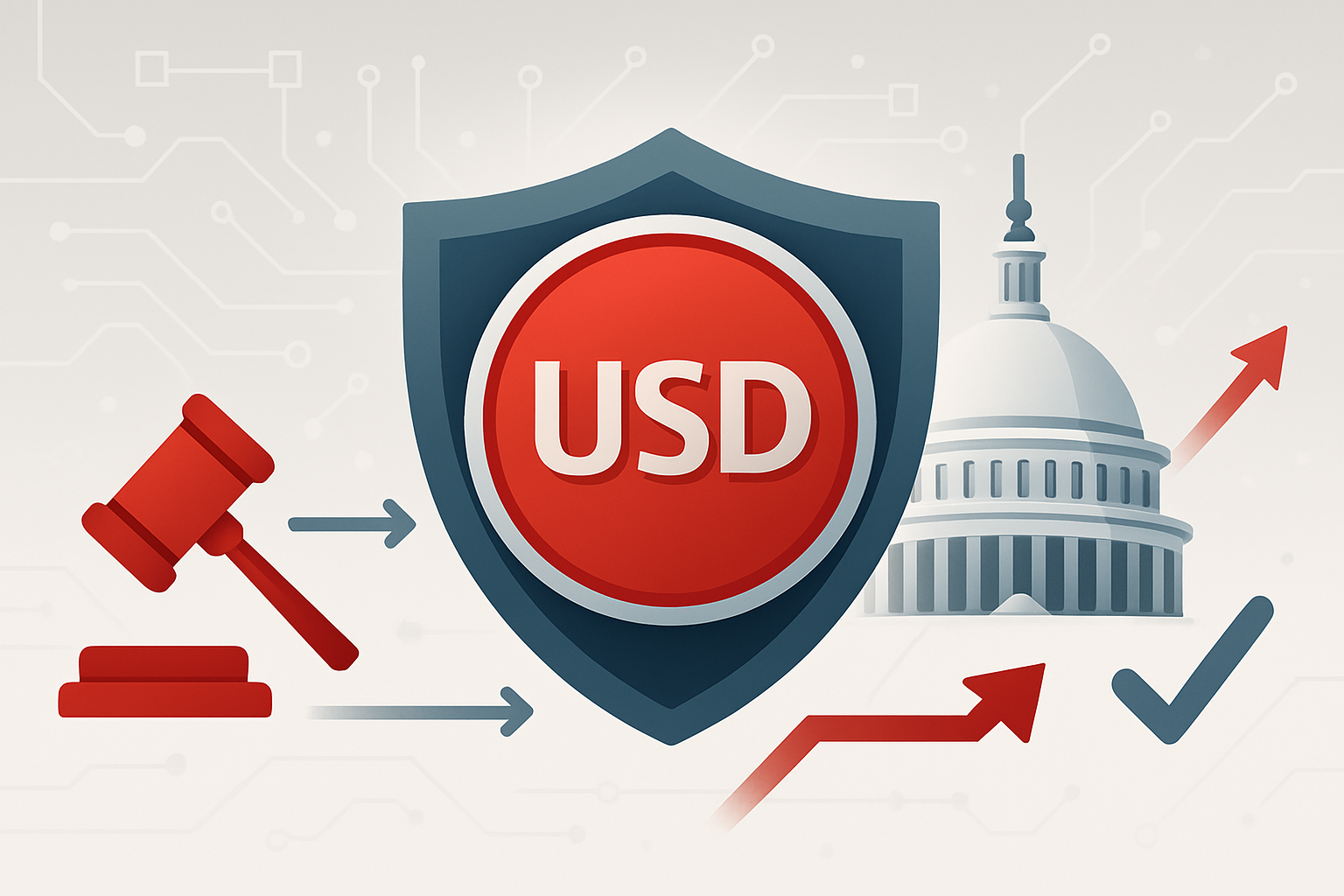
The GUIDING AND ESTABLISHING NATIONAL INNOVATION FOR U.S. STABLECOINS (GENIUS) Act, enacted in July 2025, marks a pivotal development for anyone trading or investing in digital assets, especially payment stablecoins.
With strong bipartisan backing and a clear regulatory vision, the act is transforming how the US approaches stablecoin issuance, trading, and consumer protection, setting new standards that traders and market participants must understand to succeed.
The GENIUS Act establishes the first comprehensive federal framework for regulating payment stablecoins—digital tokens pegged to fiat currencies like the US dollar. Its primary aim is to:
-
Enhance consumer protection in digital currency markets.
-
Ensure the financial stability of the broader system by preventing destabilising risks.
-
Foster innovation in payment technologies while maintaining regulatory oversight.
Clarify the rules for both domestic and foreign stablecoin issuers serving the US market.
Key Provisions of the Act
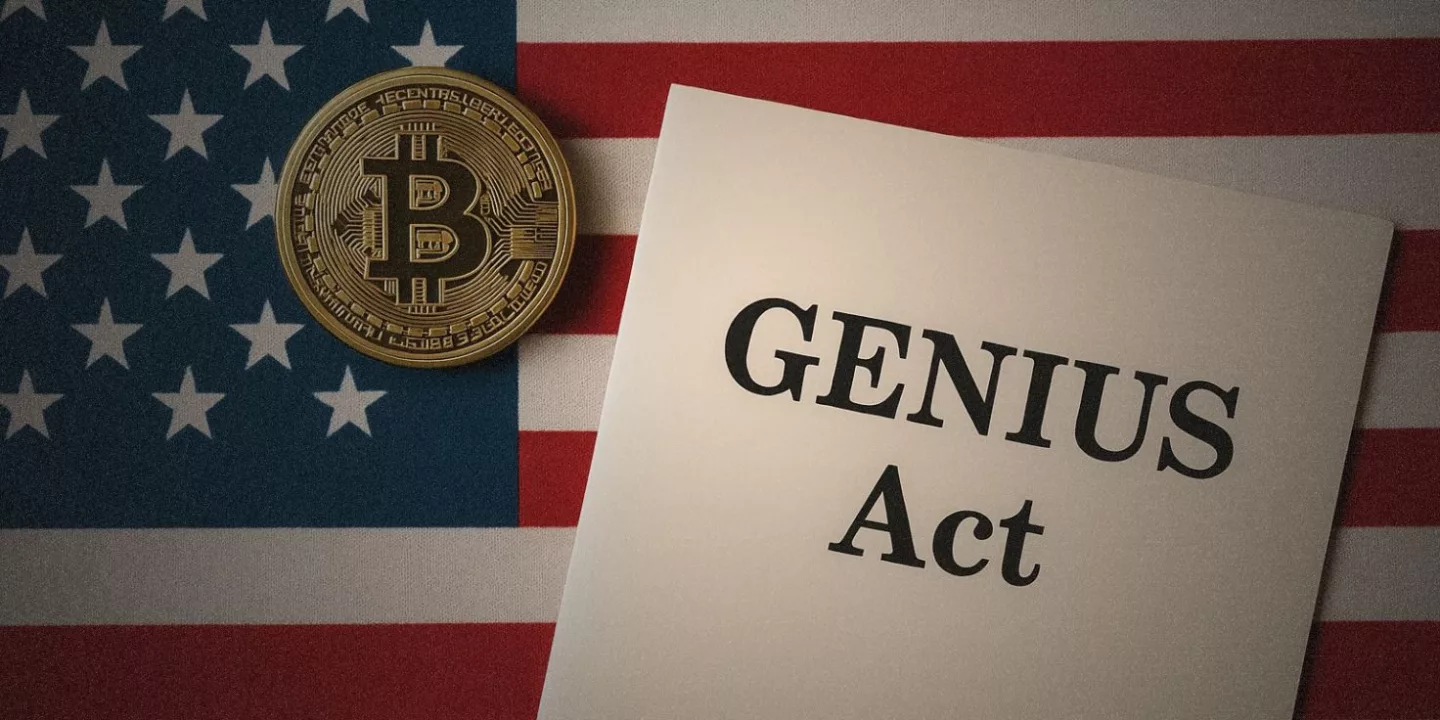
Who Can Issue Stablecoins?
Only regulated entities, known as permitted issuers, may legally issue payment stablecoins in the US. These include:
-
Subsidiaries of insured banks and depository institutions.
-
Federally-qualified nonbank stablecoin issuers (a new class, rigorously vetted and supervised).
State-qualified issuers, subject to state-level caps and regulatory approval.
Each of these entities must meet strict operational and transparency standards, creating a safer marketplace for all participants.
Full Reserve Mandate
Every permitted stablecoin must be backed 1:1 by US dollars or by short-term US Treasury instruments and other designated high-quality Liquid Assets. This measure is designed to:
-
Minimise the risk of a “bank run” or sudden collapse.
-
Ensure holders can redeem stablecoins for face value at any time.
Build trader confidence in the solvency and stability of regulated stablecoins.
Issuers are required to publish monthly reserve disclosures and maintain clear redemption policies, giving traders essential visibility into reserve strength.
Priority for Stablecoin Holders
If an issuer becomes insolvent, the GENIUS Act gives stablecoin holders first claim on the underlying reserves ahead of other creditors. For traders, this reduces counterparty risk and helps ensure funds safety in turbulent markets.
Regulatory Clarity and Oversight
Federal agencies are directed to issue detailed implementation rules within a year. Oversight responsibilities are harmonised between state and federal regulators, aimed at preventing conflicting requirements and regulatory arbitrage.
Impact on Traders
Market Structure and Liquidity
-
Fewer but Stronger Players: The act encourages consolidation among stablecoin issuers, likely reducing fragmentation but increasing the reliability of approved coins.
-
Liquidity Confidence: With fully-backed reserves and regular disclosures, traders can rely on stablecoins as a safe, liquid asset for settlement and trading.
Transition Period: All market participants have a three-year window (until 2028) for compliance and conversion to approved stablecoins. Unregulated coins face market exclusion, affecting liquidity pools and cross-exchange settlements.
Stablecoin Selection and Trading
-
Reserve Transparency: For risk-conscious traders, monthly published reserve breakdowns allow more informed stablecoin choices, akin to evaluating a fund's holdings.
-
Redemption Policies and Spreads: Traders can expect tighter spreads and reduced price dislocations in regulated stablecoins, while unapproved coins may see increased volatility and diminished utility.
Yield and Innovation: Approved nonbanks can compete on service quality, integration, and potentially offer new stablecoin features within regulatory parameters—creating new trading opportunities and products.
Impact on US Treasury Markets
Because short-term US Treasuries are approved collateral assets, demand for them is projected to rise. Market watchers should monitor Treasury yields and auction demand, as large-scale stablecoin reserve allocations may affect short-term rate dynamics and liquidity in traditional financial markets.
Foreign Issuers: Level Playing Field
The act closes loopholes that allowed foreign stablecoin issuers to skirt US rules while serving American clients. Going forward:
-
Uniform Standards: All stablecoins available to US residents must adhere to the same reserve, transparency, and compliance requirements.
Global Implications: Traders should expect other regulatory jurisdictions to introduce similar frameworks, leading to greater international compatibility but also tighter regime-driven compliance checks.
Supervision, Compliance, and Enforcement
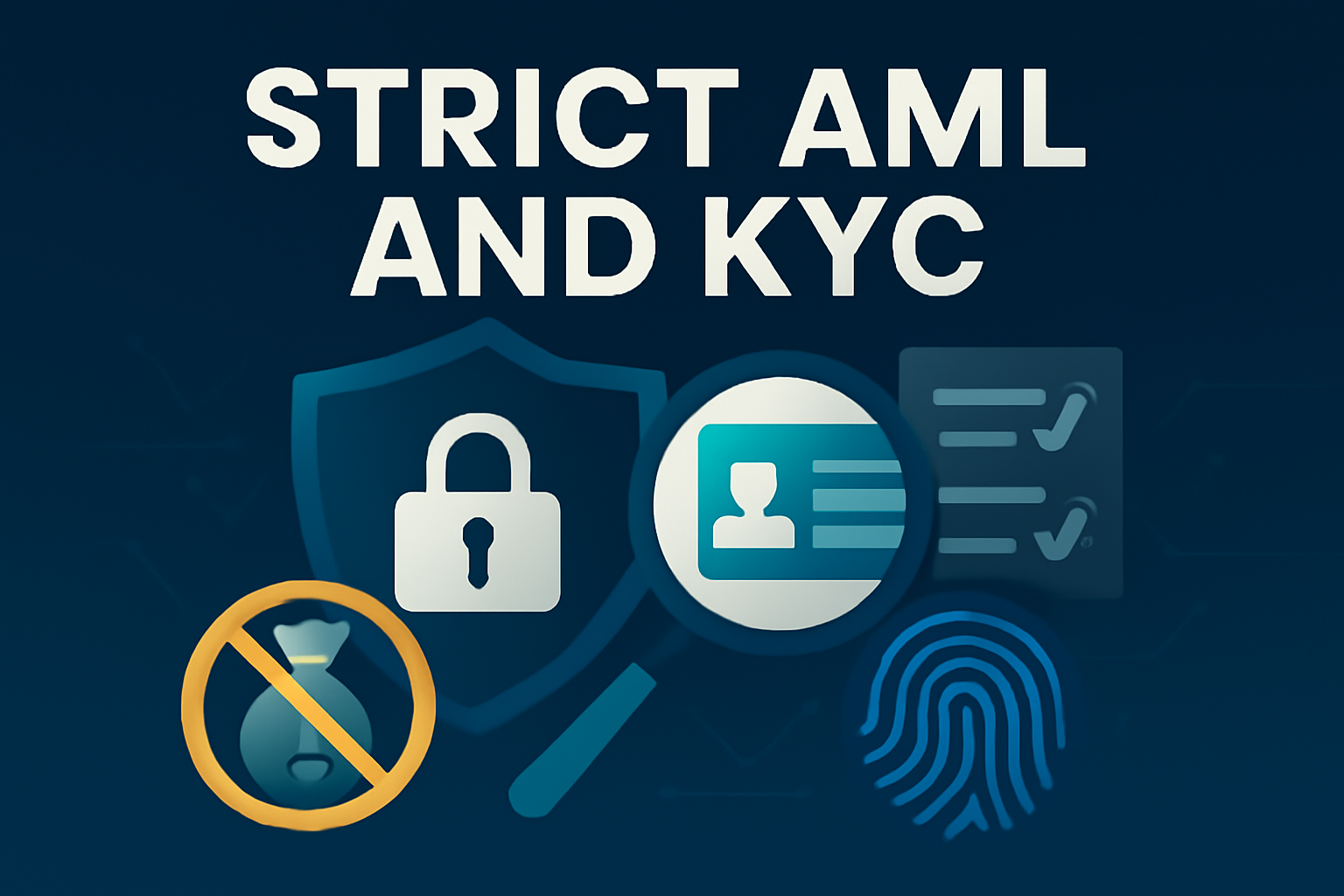
AML and KYC
All issuers must adhere to strict Anti-Money Laundering and Know Your Customer standards. For traders, this means more robust identity verification but also reduced risk of market shutdowns linked to illicit activity.
Prohibitions and Truth-in-Marketing
Stablecoin issuers cannot claim government or FDIC insurance, nor refer to their coins as legal tender—reducing confusion and protecting retail traders from misleading marketing.
Enforcement Timeline
Early compliance is encouraged, as regulators gain new tools to sanction non-compliant actors, protecting compliant market players and their customers.
Tips for Traders Navigating the GENIUS Act
-
Review Portfolio Exposure: Examine which stablecoins you hold or use and verify their path to federal or state approval.
-
Monitor Reserve Reports: Make routine checks of issuer disclosures for red flags or changes in reserve signalling risk shifts.
-
Stay Informed on Regulatory Updates: Implementation details will emerge through official bulletins; subscribe to reputable newsfeeds and regulator updates.
-
Understand Transition Risk: Some coins may lose approval status—be proactive in exiting or converting positions when necessary.
Watch for New Entrants: The act may bring innovative, highly compliant products to the market that could offer better trading utility, lower fees, or improved integration with other asset classes.
Frequently Asked Questions
Q: Which stablecoins are already compliant with the GENIUS Act?
A: As of July 2025, several banks and federally-qualified nonbanks are undergoing approval; traders should consult issuer websites and regulatory filings for current status.
Q: Will stablecoin trading fees increase due to new regulations?
A: While operational costs may rise, tighter oversight usually results in narrower spreads and improved liquidity—offsetting direct costs for active traders.
Q: How will the act affect DeFi and decentralised exchanges?
A: US-facing DeFi projects must also comply with the act for eligible stablecoins. Non-compliant coins may see delistings or restricted functionality.
Conclusion
The GENIUS Act ushers in a new era for digital asset markets, anchoring stablecoin innovation within a transparent, consumer-protected, federally regulated framework.
For traders and market watchers, the law creates both challenges—such as adapting portfolios and systems—and opportunities, including increased market stability, product reliability, and new compliant financial tools. Staying informed and proactive will be crucial for maximising potential under the GENIUS Act.
Disclaimer: This material is for general information purposes only and is not intended as (and should not be considered to be) financial, investment or other advice on which reliance should be placed. No opinion given in the material constitutes a recommendation by EBC or the author that any particular investment, security, transaction or investment strategy is suitable for any specific person.
